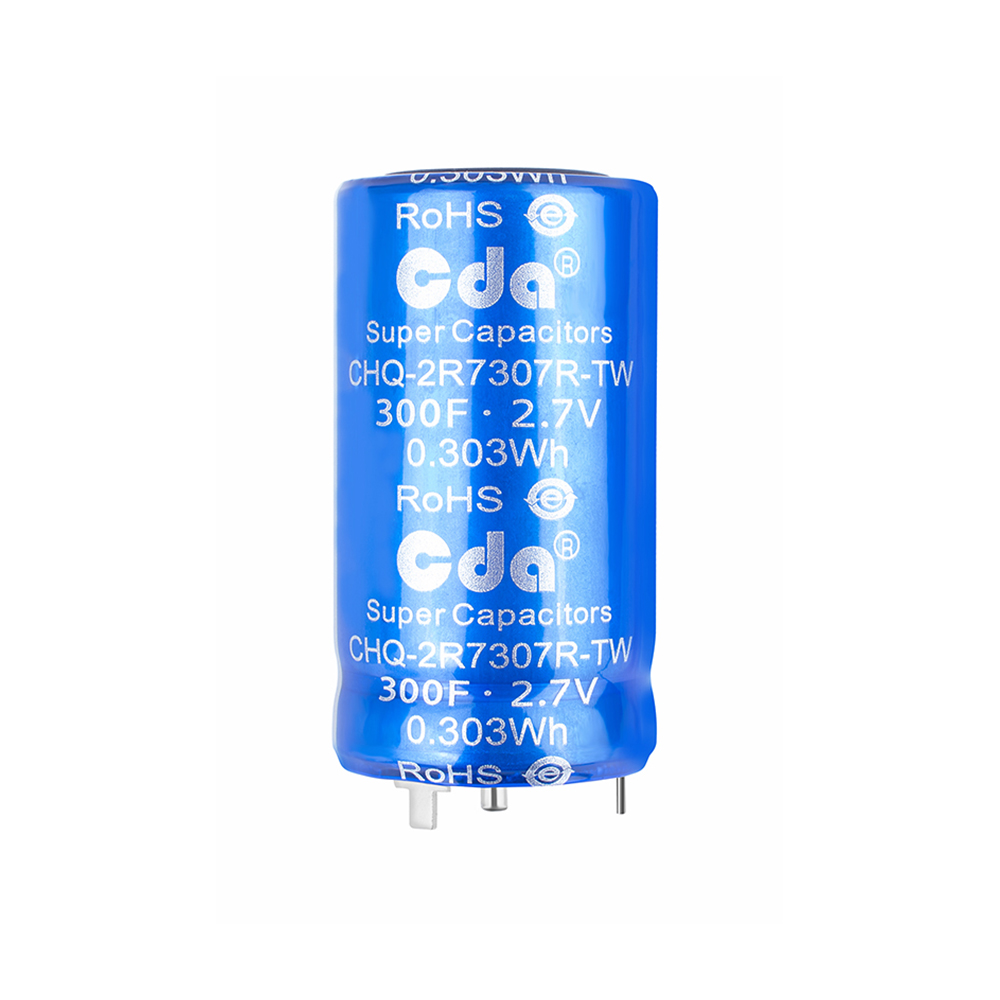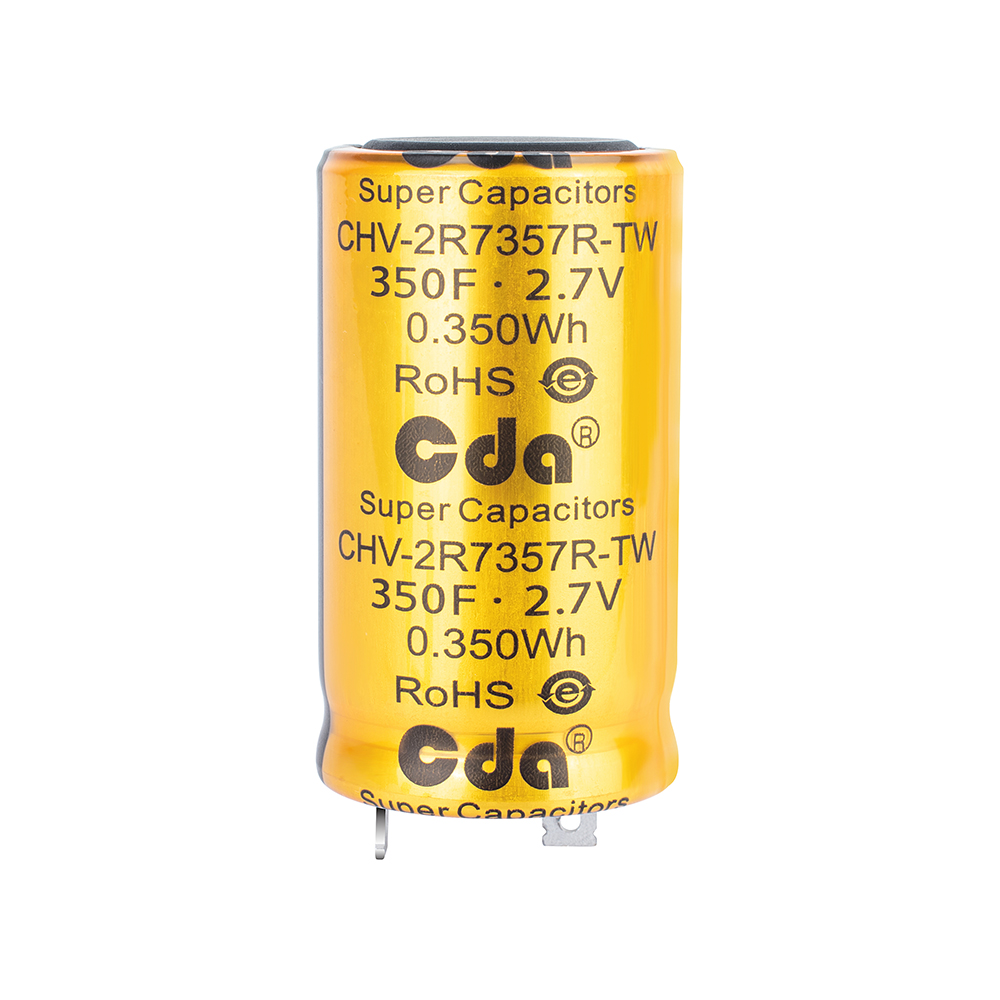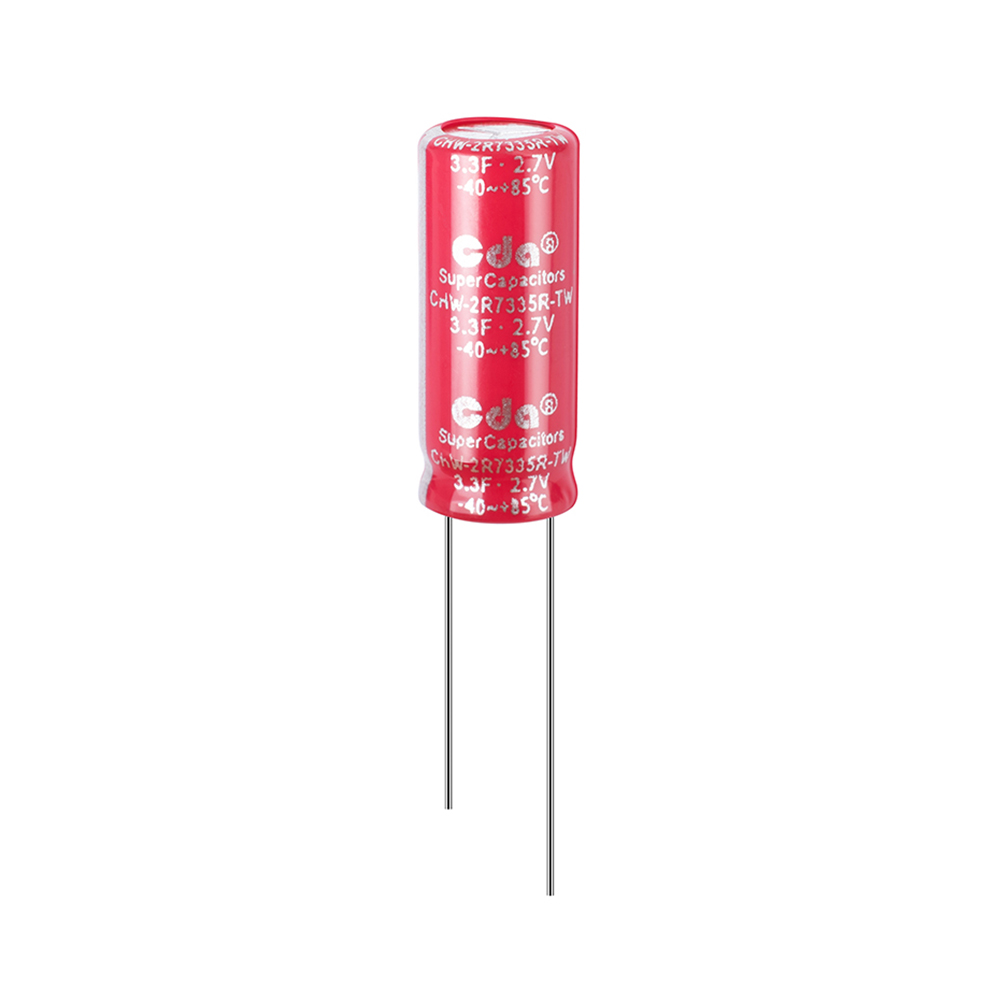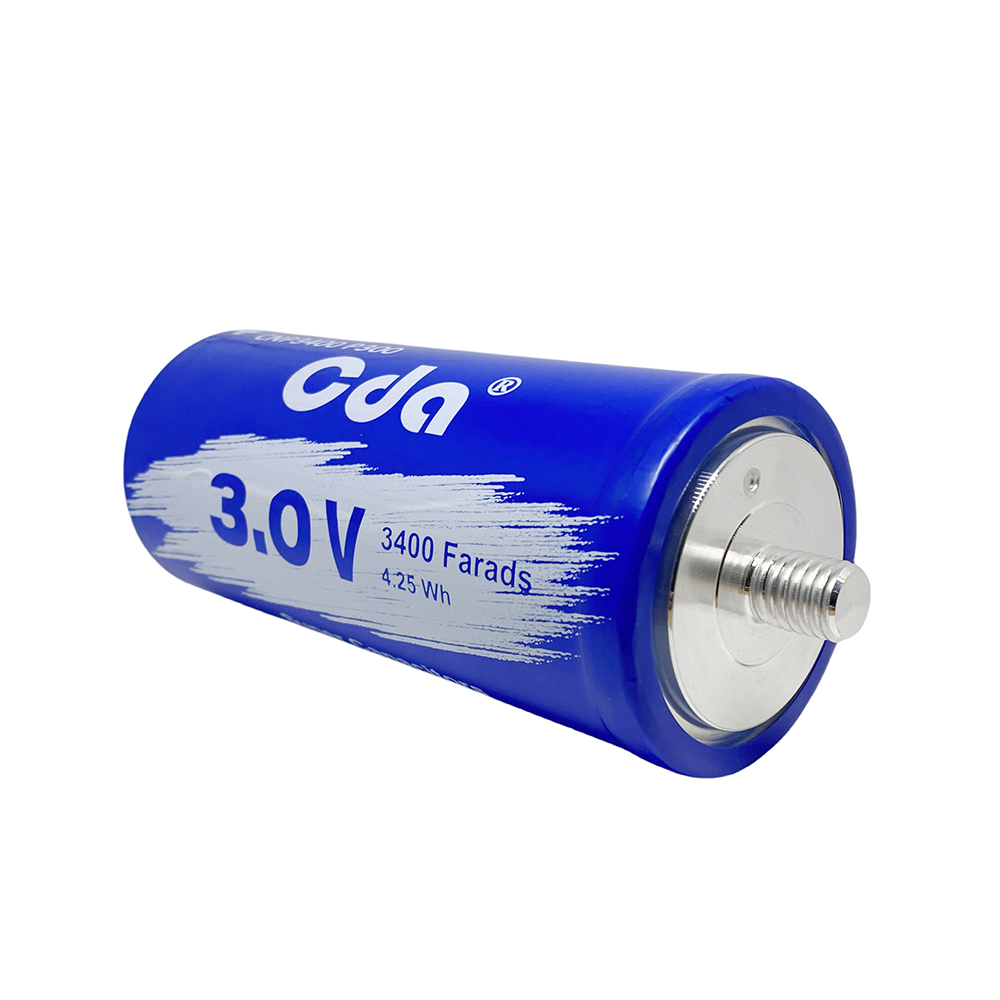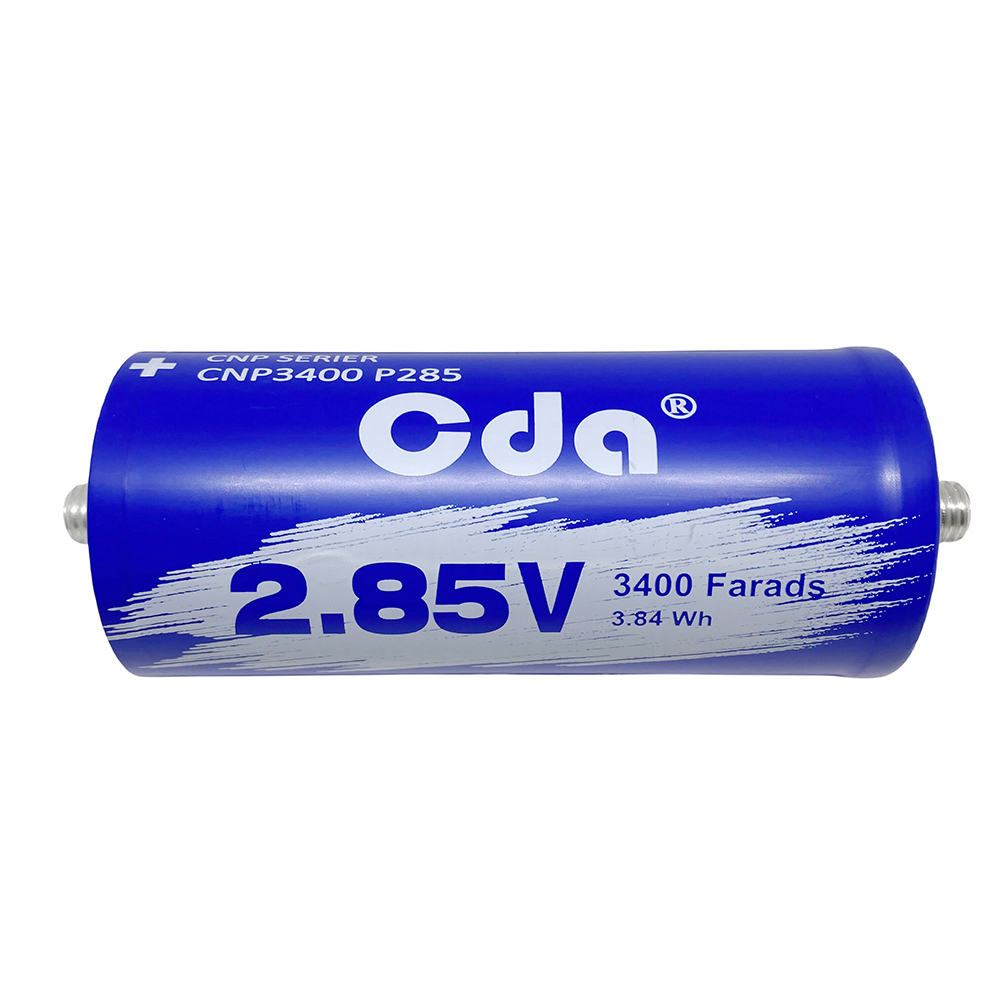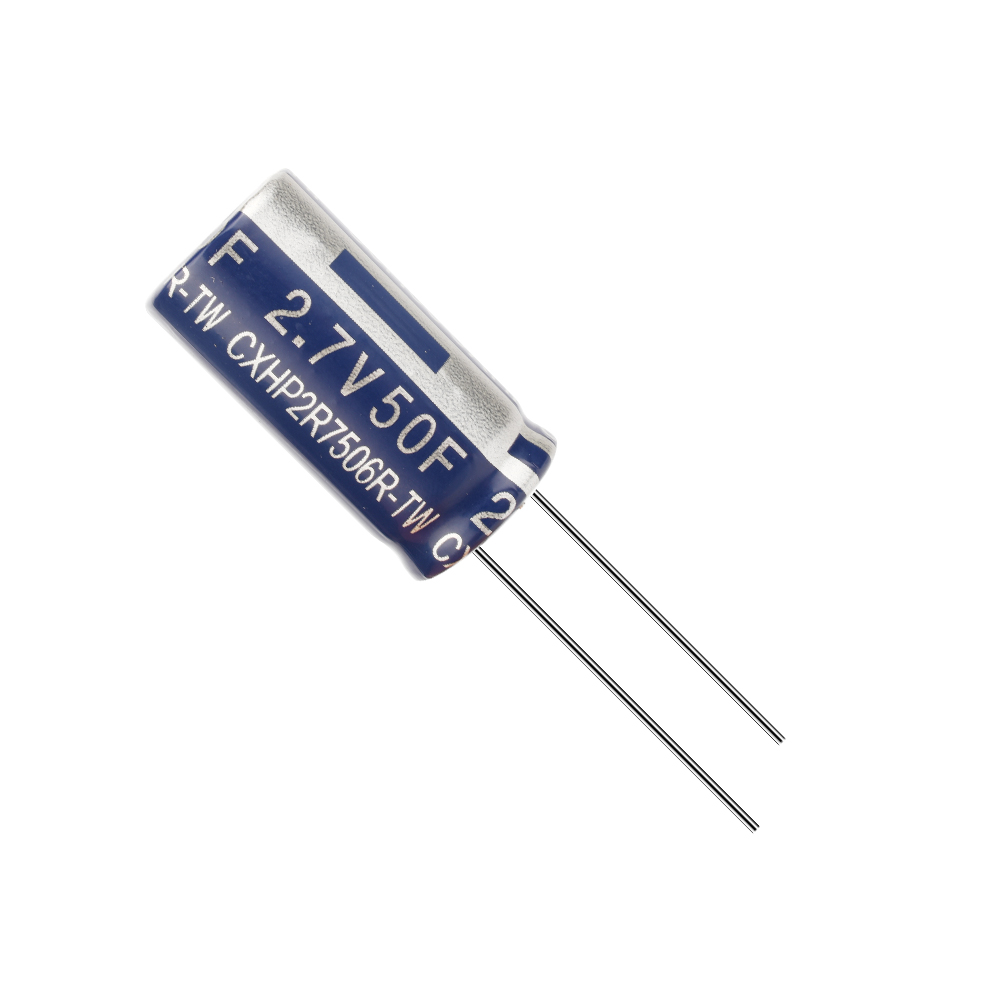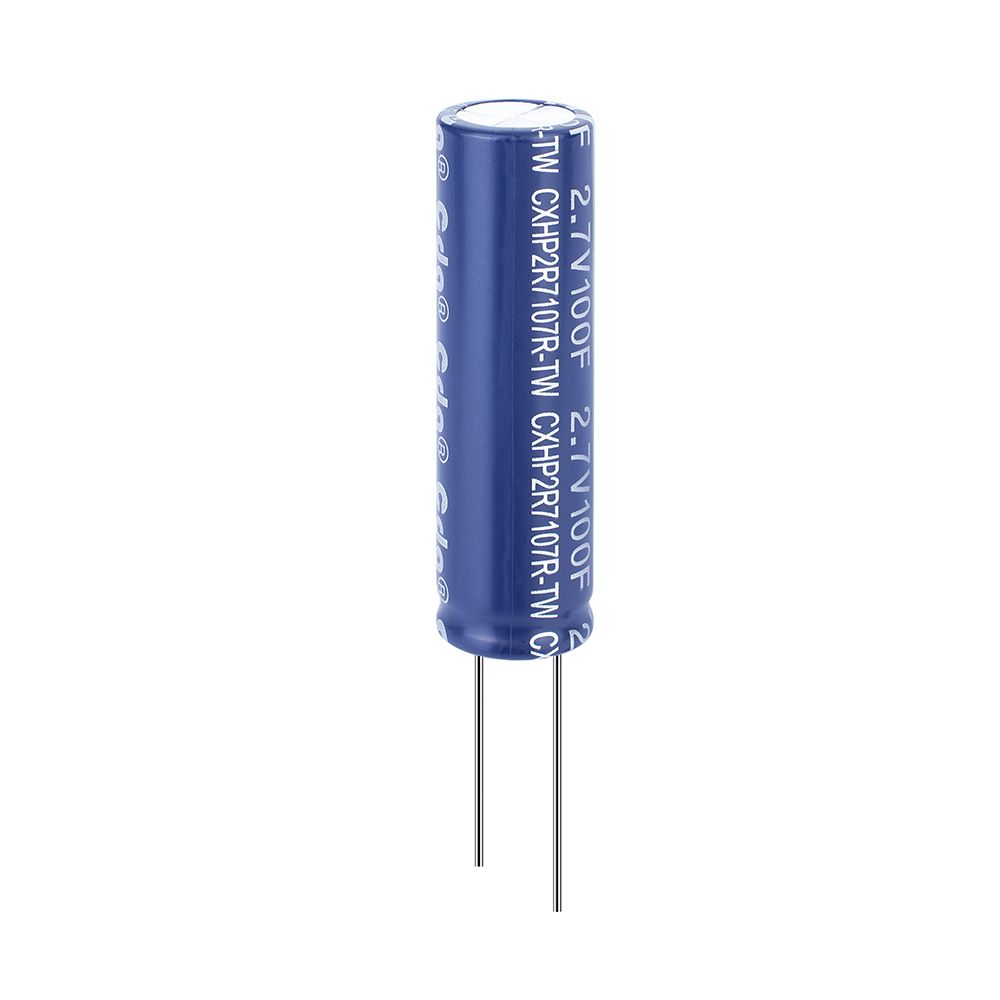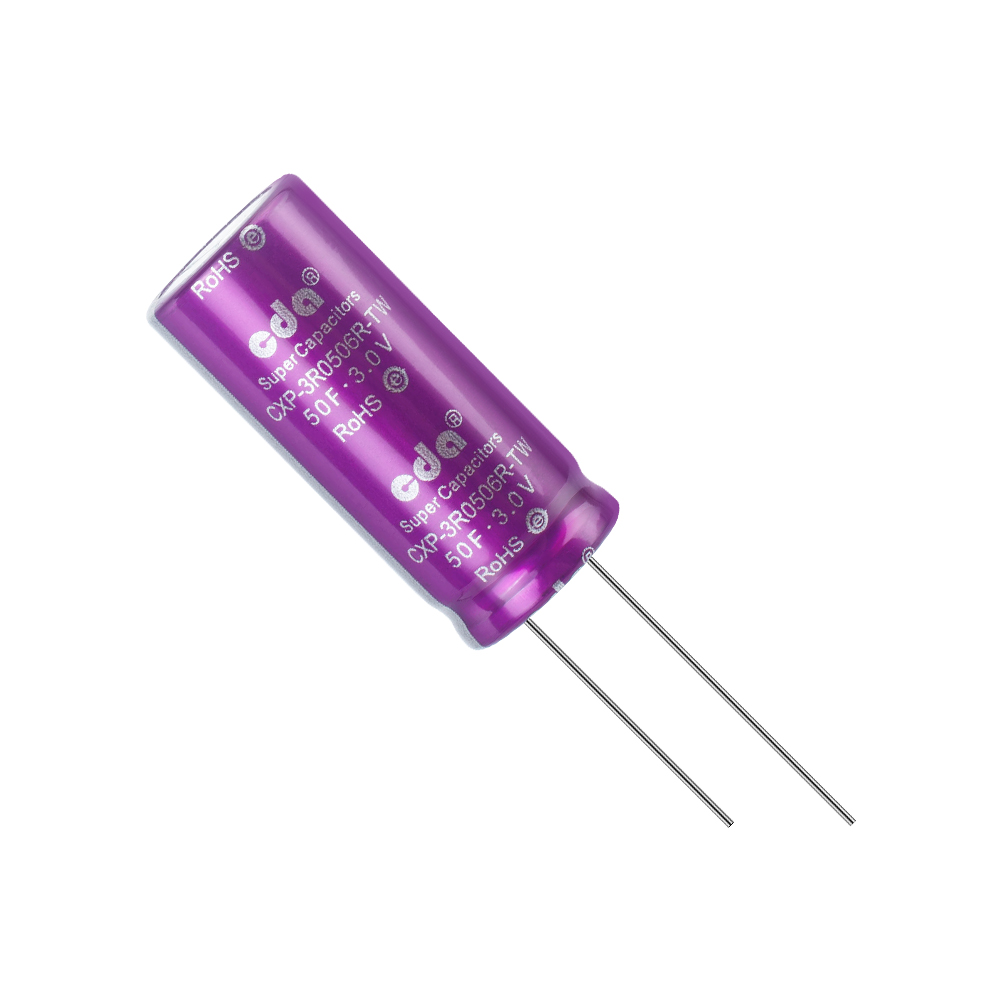PRODUCT
What is EDLC?
In general, capacitors have an insulating material, known as a dielectric, between two opposing electrodes.
However, EDLC operates without a conventional dielectric. Instead, it leverages a physical mechanism to create a double-layer structure with dielectric-like properties. This is why it is referred to as a double-layer capacitor. The charging and discharging process in double-layer capacitors occurs through an ion-absorption layer formed on the surfaces of the positive and negative electrodes, utilizing a phenomenon known as adsorption and desorption.
Cylindrical Series
Electrolytic supercapacitors, ranging from compact to high-capacity variants, are now in mass production. They come in various configurations, including radial lead type, horn type, L-type, and large bolt terminal type. The smallest form factor measures just Ø4, while the largest capacity can reach up to 3400F.
These supercapacitors offer a wide operating temperature range, from -40℃ to +85℃, and withstand voltage levels between 2.5V and 3.0V.
They find extensive applications in a range of devices such as vintage feature phones, smartphones, AV equipment, toys, and gaming consoles. Their primary function is to serve as backup power sources for real-time clocks and memory. In the realm of office automation equipment, such as printers and projectors, they are widely utilized as auxiliary power sources aimed at enhancing performance through high-speed startup and energy efficiency.
In recent years, these supercapacitors have not only been employed as backup power sources for smart instrument panels but are also being explored for peak power assistance in multifunctional smartphones and applications like flashlights for cameras. The goal is to continuously expand the market through new product development.
 English
English Chinese
Chinese
